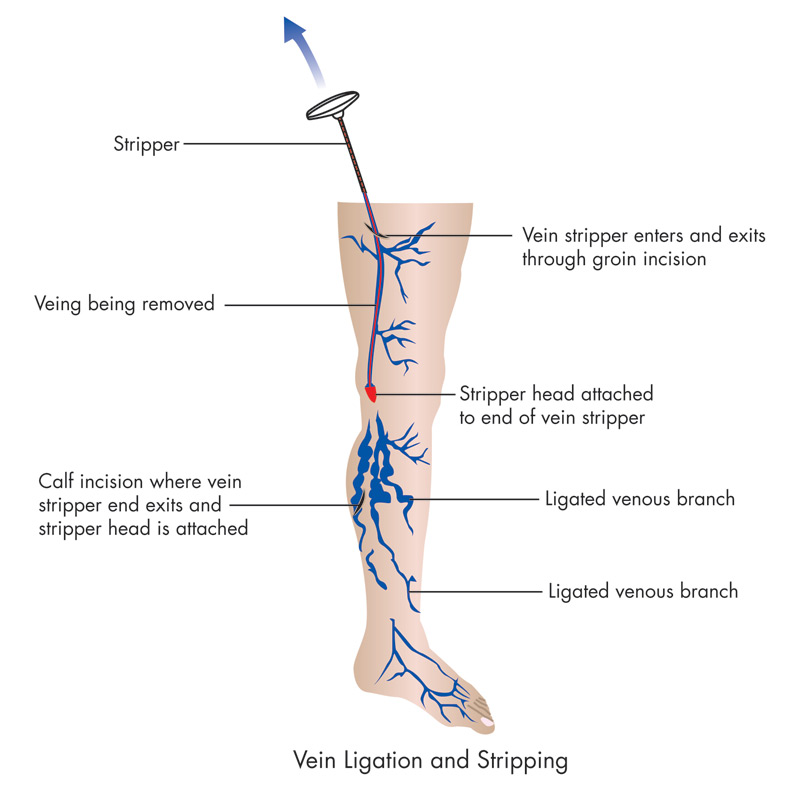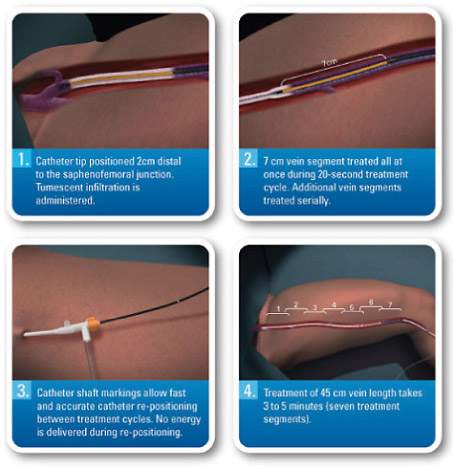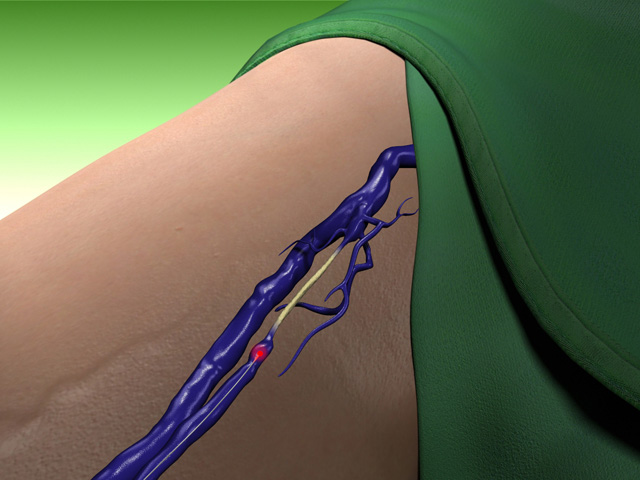Read about VNUS FAST Closure (The Venefit Procedure) by the first surgeon in the world (Dr Karamanoukian) who performed simultaneous bilateral VNUS Closure procedures (The Venefit Procedure). Dr. Karamanoukian's clinical research data was presented at the 2008 American College of Phlebology meeting (November 8) and can be viewed here.
Our commitment to exemplary care starts with meticulous follow-up of our patients and scientific presentation of our data points and outcomes in national meetings organized by the American College of Phlebology. Both of our physicians are Board Certified in Phlebology and one of the early physicians in the U.S. who sought and earned board certification in phlebology from the American College of Phlebology in 2009. Phlebology is a Board Certified discipline of venous diseases and disorders.
Venous insufficiency is a serious medical problem that is usually progressive if left untreated. When reflux of blood in the venous system occurs at the saphenofemoral junction (venous reflux), treatment options were limited, UNTIL NOW! Read a summary of all of the options that are available to treat venous insufficiency.
Traditionally, superficial venous reflux at the saphenofemoral junction (in the groin) was treated surgically by ligation (tying) and division of the saphenous vein trunk and all proximal tributaries followed by stripping of the great saphenous vein (vein stripping). This combined procedure was referred to as "ligation and stripping".

Proximal ligation requires a small (sometimes large) incision at the groin crease. Stripping of the vein may require additional incisions in the thigh, at the knee or below the knee and ankle. Historically, it is associated with a high incidence of morbidity. Today, patients stay in the hospital for at least 8 hours and get discharged with bandages from ankle to groin. Typical return to work is one to 4 weeks. When the operation was conceived some 40 years ago, patients stayed in the hospital for days and some died from pulmonary embolism because they were immobile and limited to bed rest. Although modern surgical techniques have made ligation and stripping procedures less invasive, it is still an operation that causes significant discomfort and precludes patients from returning to their daily routine.
Ablation of the vein by VNUS Closure (The Venefit Procedure) is less invasive than surgery and has a much lower complication rate. Newer in the sense that it has replaced "vein stripping" and has been FDA approved since 1999 and over half a million people have had this procedure in the United States. It is estimated thar over a million patients have had the VNUS Closure (Venefit Procedure) procedure worldwide!
The Venefit procedure is well tolerated by patients and produces good cosmetic results. Good clinical results are observed at 5 years follow-up according to a recent published study from Dr Proebstle in Germany.
VNUS FAST Closure (Venefit Procedure) is a variation of the 1st generator catheter and is used almost exclusively now in the United States. Instead of a pronged tip, it uses a 7 cm coil to deliver radiofrequency energy to a 7 cm segment of vein. The great saphenous vein can be ablated with the VNUS Closure FAST (Venefit Procedure) catheter to treat saphenofemoral venous reflux disease. Similarly, the lesser (or short) saphenous vein can be ablated with the VNUS Closure FAST (Venefit thermoablation) catheter to treat saphenopopliteal venous reflux disease with good success.
Although other surgeons were quick to adopt this second generation FAST catheter, Dr. Karamanoukian waited for the clinical results to be published in the scientific literature before adopting it and using it in his patients. Having published over 140 scientific articles, Dr. Karamanoukian believes that adopting new technology should await hard proven scientific data. However, Dr. karamanoukian is the first surgeon in the world to perform bilateral VNUS Closure procedures (Venefit Procedure) at the same office setting! This is very helpful in reducing the number of trips to the Vein Treatment Center and allowing the patient to resume all activities as soon as possible, typically returning to work the same afternoon and certainly by next morning!
The benefit of having your treatment done at the Vein Treatment Center is that we have both EVLA laser and VNUS Closure FAST (Venefit Procedure) technology and Dr. Karamanoukian will determine which technology best suits the anatomy and pathophysiology of venous insufficiency in a particular patient. We are the only center in Western New York to have both of these technologies under one roof and with a large expertise in performing both of these procedures by our Board Certified Phlebologist, Dr Karamanoukian. We also offer a third option, the ClariVein Procedure which uses mechanicochemical ablation (MOCA) technology

EVLA Study presented by Dr. Karamanoukian
Dr. Hratch Karamanoukian and Dr. Raffy Karamanoukian recently presented a very unique contribution they have made to the EVLA procedure at the 2008 American College of Phlebology meeting. At the meeting, held in Marco Island, Florida, Dr. Karamanoukian presented his clinical findings for simultaneous bilateral EVLA ablation for patients who have venous reflux disease on the right and left sides.
This is the first report in the literature - a technique that was developed by Dr. Karamanoukian and which has been the standard of care in our Vein Treatment Center in Williamsville, NY and Vein Treatment Center in Santa Monica, CA.
Instead of bringing patients in twice to do the procedures, namely once for the right side and once for the left side, both sides are done simultaneously and patients are able to return to work the following day. Both doctors perform the VNUS Closure procedure and EVLA procedure simultaneously in patients with bilateral saphenofemoral venous reflux disease.
*EVLA = Endovenous Laser Ablation - technique used to obliterate the saphenous veins using laser energy.

For more information about varicose veins, spider veins, venous reflux and treatment options such as the closure procedure or guided sclero, contact Dr. Karamanoukian at the Vein Treatment Center, a National Center of Excellence for Vein Disorders by email or by phone at (716) 839-3638.